Sometimes, you unexpectedly find the career you love.
That’s true for helicopter pilot Nadia Bosman, who didn’t initially set out to pursue a career in the cockpit. She was inspired to do so after meeting a handful of pilots and has since spent 15 years flying helicopters for a variety of industries.
Nadia is currently a pilot at CMH Heli-Skiing during the winter and summer seasons and is also a flight instructor to up-and-coming aviators.
She shares her take on what being a helicopter pilot is like, what it took to become one, and the advice she has for anyone who’s curious about the industry.
A boss behind the controls
Buckled into her pilot’s seat, Nadia oversees a complicated-looking combination of controls: foot pedals, cyclic, collective, throttle, engine, and a glowing dashboard of temperature gauges, fuel gauges, hydraulics, and flight instruments.
Passengers in her helicopter can see the back of her red flight helmet, which is emblazoned with BOSMAN, her last name, in bold letters. The fact that her surname hints at being a ‘boss’ only adds to her cool factor and the awe people often react with when they see her in the pilot’s seat, expertly in command of her machine.
The 38-year-old has grown accustomed to these double-takes. People are typically excited and want to know more, she said.
“As a female pilot, I tend to get a lot of attention because it’s something people don’t see every day.”
Around 4% of Canada’s registered helicopter pilots are female, according to the most recent publicly available stats published by Transport Canada in 2018. Two of those women fly for CMH.
“There aren’t very many of us, so for CMH to have two female pilots employed is actually pretty spectacular given the ratio,” Nadia said.
Nadia believes that showing and speaking about her experience in aviation is key to growing the industry and making it more diverse. She says ‘yes’ to interviews and generously answers questions with the hope that one day, seeing a woman in a flight suit won’t be noteworthy.
“I think it’ll be really exciting the day it’s not interesting anymore,” Nadia said, smiling.
“Right now, I think it’s still important for women to represent in this industry, and so many other industries. Being present and representing that we are capable, it shows everybody that we can do this. Little boys, little girls, and everybody in between. You know? There’s no limits.”
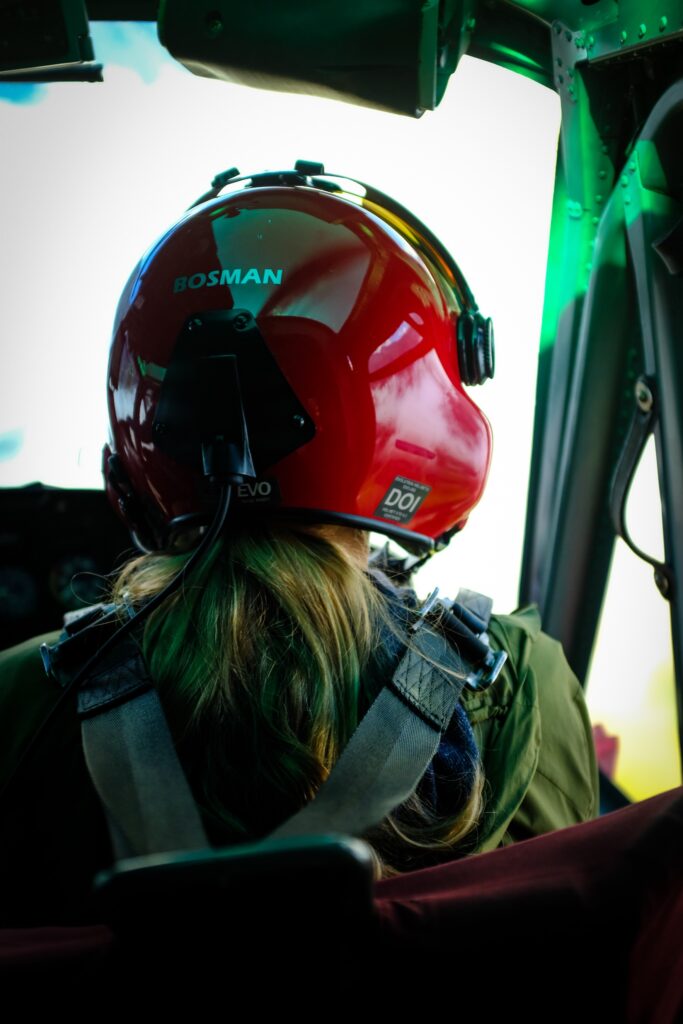
Challenging herself
Approaching her career with a ‘no-limits’ mindset has earned Nadia a wide variety of flying jobs during her 15 years in the air.
“If I’m ever bored in my career, it’s really my own fault, because there’s so many different avenues to go,” she joked.
She’s done everything from piloting a city news station traffic helicopter to operating sightseeing flights, to oil and gas work, to battling wildfires with a longline water bucket, to environmental work with glaciologists, microbiologists, and geologists, and now heli-skiing and heli-hiking.
“The thing I appreciate about that is I get to meet people from different fields in jobs that I didn’t even know existed,” she said. “When I’m out with them in the helicopter and I need to take them places, it’s as though I get to take part in their job a little bit as well. I really enjoy that.”
Nadia’s breadth of experience led her to CMH. Her first season transporting heli-skiing guides and guests was in 2019 at the Monashees. She’s since spent time at other CMH destinations, enjoying the chance to pilot a few different machines—mostly the Bell 407 and the Bell 212.

Like all CMH pilots, Nadia works for Alpine Helicopters, CMH’s helicopter operating partner for more than 30 years. She said she was drawn to working for Alpine because of the chance to fly for CMH, which requires a nuanced skillset and established experience.
Heli-skiing pilots must be skilled at flying in the mountains and be able to navigate the unique variables that wintertime brings. It’s an environment where the weather can change quickly, snow falls at ever-changing densities, and the temperature fluctuates to extremes. There are also a host of logistics that come with transporting rotating groups of people, including landing or taking off beside them in locations that frequently change.
There’s a lot to think about, Nadia said.
“It’s managing the weather, trying to predict what the day is going to bring, being able to make good decisions about when we’re going flying and when we aren’t. To be able to make those decisions comes with experience.
“I think that’s a really important part of what helps keep us safe in the mountains; having the experience and being able to say ‘no’ when it’s not a good time to be flying.”
The guide-pilot relationship
Nadia makes many of her decisions at CMH in partnership with the skilled guides who sit shotgun beside her. They regularly lean on each other’s experience and knowledge.
“For the guide and the pilot to be able to run a safe program, we really have to work together,” she said. “I consider us to be a crew in the cockpit.”
Guides are balancing decisions about which runs to ski or where to hike, conditions, safety, weather, temperature, group dynamics, avoiding wildlife, and other factors.
“While the guides are thinking of those things, I’m thinking about factors like our fuel amount, the weight of each group, wind direction, or incoming weather,” Nadia explained.
“For us to both accomplish our goals and run a safe program, it’s important for us to constantly communicate.”
If you’re a pilot who enjoys balancing all these elements, flying heli-skiing is enjoyable work.
“It’s challenging for pilots to fly heli-skiing, but it’s a lot of fun,” Nadia said. “Part of the fun is that it does challenge us a lot. But we also get to be in beautiful places, and working for CMH is always a blast.”

Work-life balance
When Nadia isn’t maneuvering a helicopter, she mountain bikes, snowboards, skis, and paddleboards. She and her partner, Larissa, just finished building their dream home together near Golden, BC, even constructing most of the log home themselves.
Oh, and she’s also a beekeeper. Nadia often helps Larissa and their friend, Cyd, with their business, Bee Adventurous Honey, tending to the hives and making sure the bees are healthy.
Nadia’s outlook on living an adventurous life is at the heart of why she loves being in the air.
“What I love about flying the most is that I have the ability and access to places that I can’t imagine how else I would get there.
She still gets struck by the landscapes and natural beauty she gets to travel through.
“Oftentimes I have really ‘WOW’ moments where I think, ‘this is incredible.’ Especially if I’m alone ferrying an aircraft from one place to another, I might be fly over a lake that I had no idea existed, and maybe other people don’t even know that beautiful spot exits. I try to take it all in.”
Changing directions
Nadia is now well established in her career, but her path wasn’t always so clear. In fact, she was already working in an entirely different field when she decided to change lanes and become a pilot.
“To be honest, it’s never something I thought about as a career when I was younger. It wasn’t even something I thought about as something I’d be able to do,” she said.
She originally completed a four-year bachelor’s degree in Applied Eco Tourism and Outdoor Leadership at Mount Royal University in Calgary, and then worked in an office environment before realizing that desk life wasn’t for her.
“I wanted to get more into the outdoors and get to places that I otherwise wouldn’t be able to get to,” she said.
This led her to more seriously consider becoming a pilot, which she knew would include the elements she craved. While doing work experience for her original degree she’d seen firsthand just how many different places a helicopter could land.
“I did practicums as a tree planter, at a backcountry lodge, and with a non-profit that took youth to the Arctic. I always ended up interacting with the helicopter pilots during these encounters, and I asked them questions and was curious.”
Nadia decided to go for it and in 2009 entered flight school as the only woman in her 12-person class.
Becoming a helicopter pilot in Canada
In Canada, a commercial helicopter licence takes around six months of full-time training. The cost varies, but can easily be $100,000 or more. Scholarships or grants are sometimes available, but loans and cash-in-hand are often what it takes.
“I had to apply for a loan and scrape together every penny I had,” Nadia said.
Training includes 80 hours of ground school, where pilots learn about their machines and the theory behind navigating them. They deep dive on everything you need to know about engines, carburetors, turbine engines, navigation, meteorology, theory of flight (how a heli generates lift, etc.), and more.
“All of those components give you the knowledge to have good airmanship and be a good aviator,” Nadia said.
In addition to theory, students log 100 hours of flight training, which includes solo flights. A final written exam and flight test with Transport Canada earn you your licence.
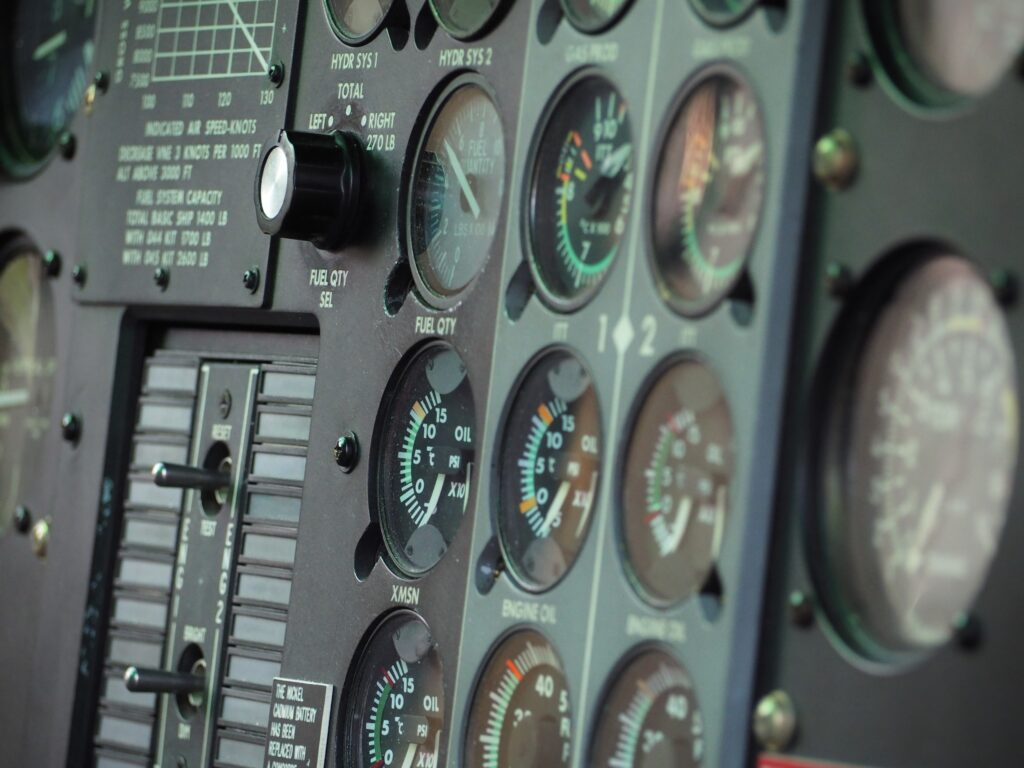
Gaining experience
Immediately after graduating is often when new pilots face their biggest hurdle yet: getting hired somewhere.
Even though the needs of Canada’s aviation industry currently outpace the number of pilots available to fly, inexperienced pilots aren’t as sought-after. Becoming experienced with real-world flight hours can be challenging.
“There’s a big gap in where you are when you first start out, compared to where you end up, let’s say where I am now,” Nadia explained. “It’s difficult to get those hours and to get that experience.”
Nadia’s first big break came when she decided to take a strategic road trip and introduce herself to companies she’d researched. Paper resumes in hand, she drove from Calgary to Grand Prairie, AB, making multiple stops along the way.
Her face-to-face tactic worked. She was hired by Gemini Helicopters to do work with the oil and gas industry. This allowed her to gain the experience she needed, and she was eventually able to explore other opportunities and even become a flight instructor.

Holding the door open for others
As someone whose interest was once sparked by speaking to working pilots, Nadia is passionate about helping others learn.
Her work as a flight instructor mentoring students has reinforced how important she believes it is for her industry to lessen the barriers brand-new pilots face when trying to gain experience.
“I’m excited for our industry to change in that regard. I’m excited to see pilots with low hours to get more mentorship from pilots who have experience, from employers, and even from the companies we contract to,” she said.
Nadia is also realistic about elements of the job that can be a downside for some. The remote locations and shift work (she works away from home, two weeks on, two weeks off) can make it trickier to balance family life at home, especially if you want to be a parent. But with the right supports it can absolutely be done, she said.
She’s hopeful that the number of female pilots will continue to increase.
“I think there are definitely more women coming into the industry. I’ve had the pleasure of instructing quite a few women that have come through the flight school. I had a female flight instructor. That was great to see. I ended up working at that same flight school as a flight instructor, and by the time I left there, there were three female instructors.”
Gender aside, the total number of new helicopter pilots entering the industry declined steeply before and during the COVID-19 pandemic and hasn’t yet recovered. As a result, there’s current demand and opportunity for new pilots.
Nadia doesn’t hesitate when asked what advice she has for women who are curious about taking to the skies professionally.
“I would encourage any woman to get into aviation, and specifically into helicopters. It’s a fantastic career,” she said. “Women are strong, we’re capable, we’re competent, and this is not the type of job that’s impossible for us to do.”
“If you’re interested, go for it.”
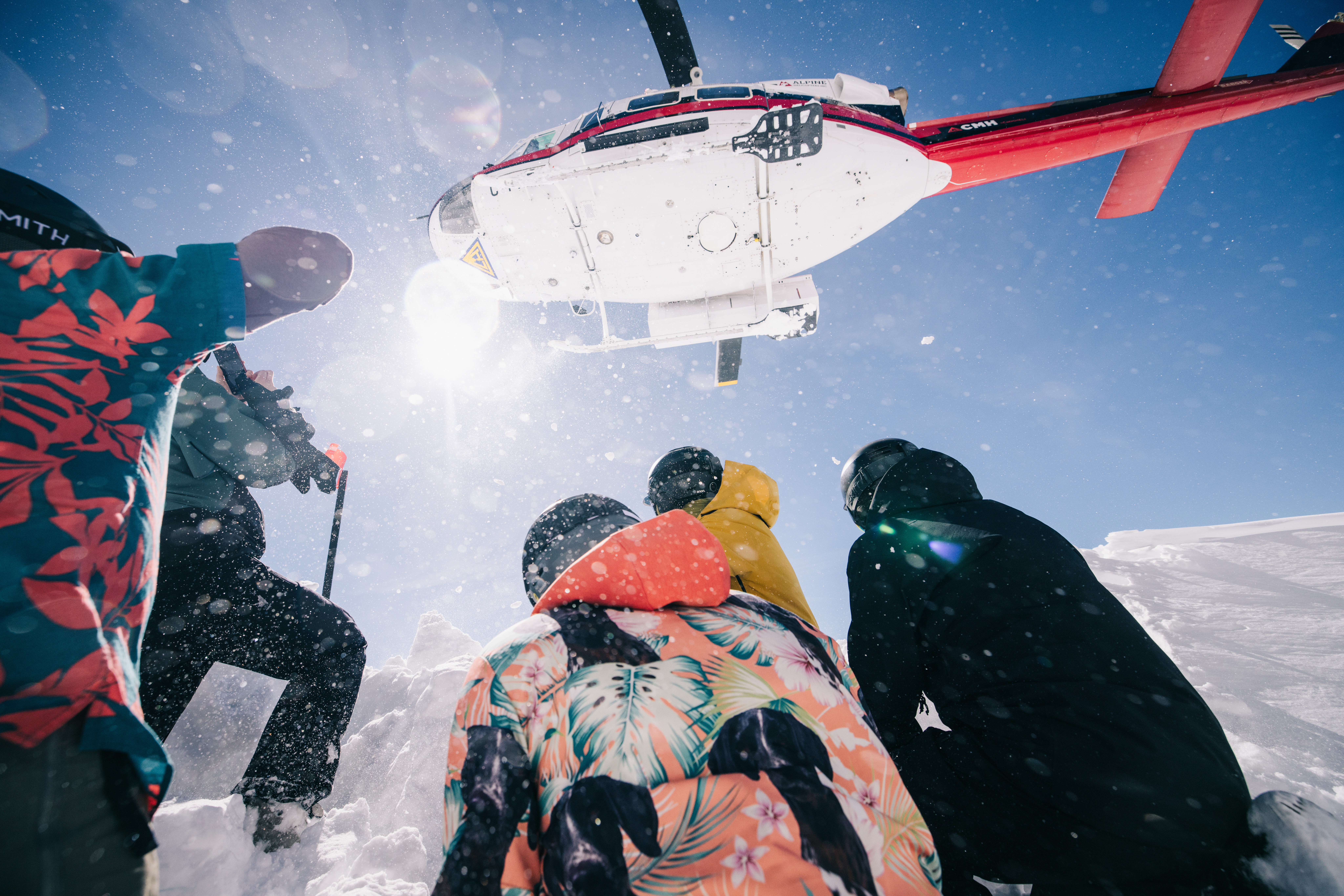
Keep exploring

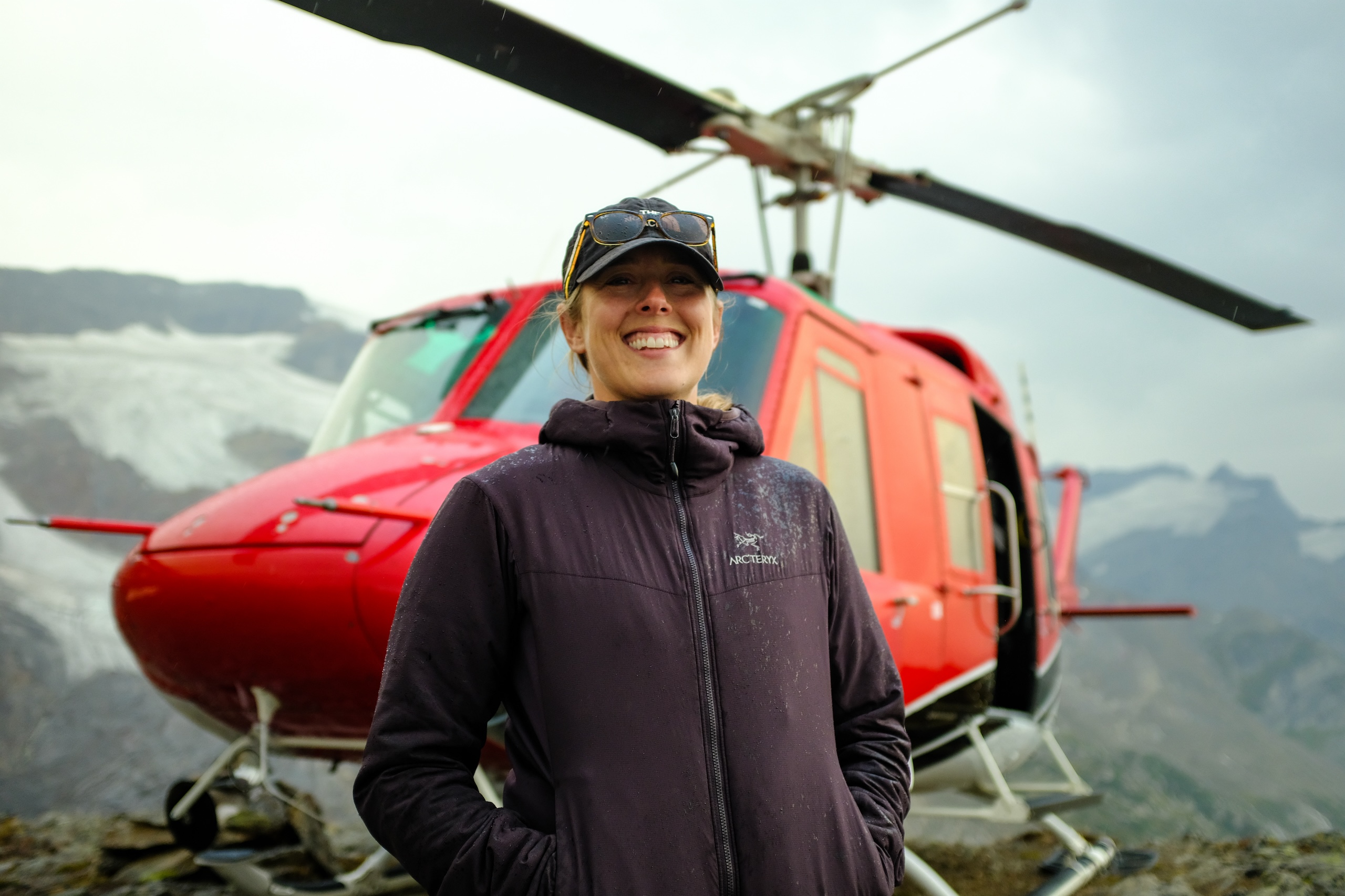
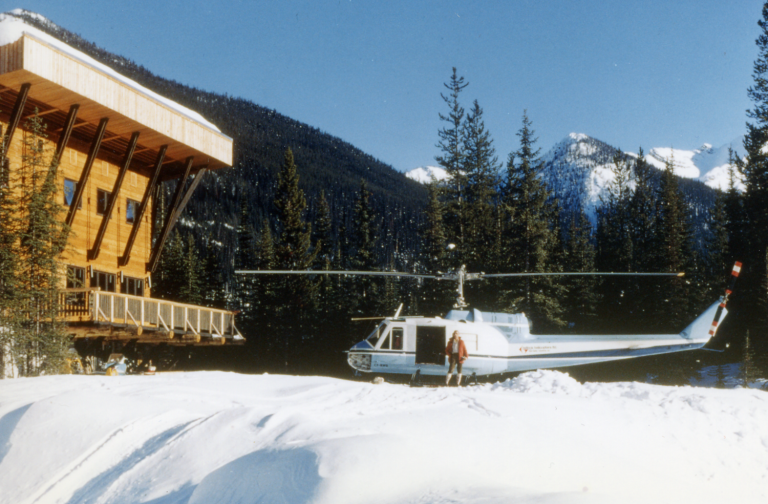
Comments